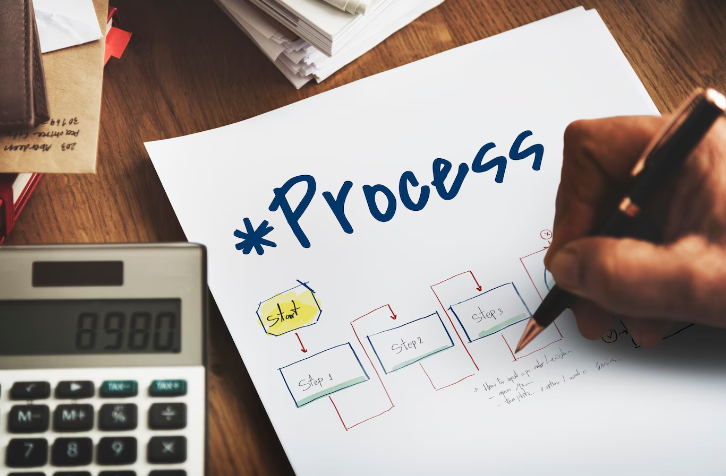Modern technology is continuously transforming human lifestyles, and interacting with various software solutions has become part of everyday life in the 21st century. It’s hard to imagine daily tasks, especially in the workplace, without the involvement of software.
At the core of these solutions is software product development, a meticulous process defined by a set of structured steps, commonly referred to as the Software Development Life Cycle (SDLC). Whether you’re creating a sophisticated web or mobile application, SDLC plays a pivotal role.
You might have many questions or uncertainties about SDLC and its processes. In this article, we’ll provide an in-depth overview of the software product development process to clear those doubts.
Understanding the Software Product Development Process
The software product development process consists of the necessary steps to develop software from its initial concept to its market launch. This process typically involves multiple stages in transforming a product idea into a viable solution for the market.
The Software Development Life Cycle encompasses the rules and practices that help align tech teams, non-tech teams, and project stakeholders in creating digital products or software solutions.
This process starts with ideation and ends with the final product’s features, pricing strategy, and distribution. While the ultimate goal of the product development process is to maximize value and reduce risks, failures can occur due to poor quality, non-competitive pricing, mistimed market entry, weak promotion, or poor brand awareness.
Now that we’ve covered the basics of software product development, let’s dive deeper into the process’s various stages.
Step-by-Step Software Product Development Process
Software development consists of several stages, each bringing its own significance to the overall process. Many businesses opt for product development consulting to ensure everything proceeds in a structured manner. Let’s explore the stages in detail:
1. Brainstorming and Planning
The first stage is brainstorming, where the product concept is defined. This begins with a promising idea that must be carefully thought through before execution. Businesses often generate many ideas, but only a few hold real potential.
Key actions in this phase include:
- Discussing the project value and idea with the development team.
- Gathering market information and analyzing trends.
- Documenting the concept and obtaining stakeholder approval.
Once the idea is solidified, meticulous planning begins. This step is crucial, as it defines the project scope and outlines how it aligns with business objectives. Planning also covers resource allocation, budgeting, timeframe, and solution identification.
2. Product Research and Requirement Analysis
To ensure the success of your product, thorough research is essential. This helps validate your idea, ensuring it’s something people will pay for. Various methods to conduct research include:
- Online surveys using AI feedback tools for feedback.
- Crowdfunding campaigns.
- Engaging with forums like Quora or Reddit.
During this phase, detailed project analysis occurs, assessing technical and economic feasibility. Product development engineers conduct a feasibility study, identifying potential risks and devising mitigation strategies.
3. Prototyping and Design
Prototyping involves creating a preliminary version of the product to validate its design and concept. This prototype can serve as a marketing tool for stakeholders.
The next phase is product design, where the detailed architecture is crafted to meet project requirements. This design serves as a blueprint for the solution, covering workflow, standards, and the overall system, including both hardware and software components.
4. Development and Coding
Once the design is approved, development begins. This phase involves coding the product and transforming the design into a functioning software solution. It is the most time-consuming part of the process, as it’s the backbone of the entire project.
The development phase includes several release stages—alpha, beta, and final product.
5. Integration and Testing
After development, the system undergoes integration and testing. QA engineers utilize various frameworks to perform unit tests, automated tests, and manual tests. Different types of testing, including functional, system integration, and acceptance testing, ensure the solution meets business objectives and functions correctly.
Verification and validation are critical in this phase to ensure a bug-free solution before deployment.
6. Implementation and Deployment
At this stage, the software is ready for deployment. Data and components are transferred to the production environment. Depending on the project’s complexity, deployment may be straightforward or involve multiple steps.
Once deployed, system analysts and end-users can interact with the product.
7. Operations and Maintenance
The final phase is ongoing operations and maintenance. This is vital, as it involves collecting real-world feedback and fine-tuning the product based on user needs and performance. Regular updates and improvements ensure the software continues to meet user expectations.
Conclusion
Software development processes can vary from company to company, depending on specific goals and needs. The primary focus is always on delivering a high-quality product that meets market demand.
Each phase of the software product development process plays a crucial role in ensuring the final product meets both business and customer expectations. With a well-defined SDLC, companies can stay on track, ensuring timely and successful project completion. Moreover, having a dedicated development team can give businesses an edge in software engineering, driving successful results.
